Home>diy>Building & Construction>What Is The Difference Between Commercial And Residential Construction?
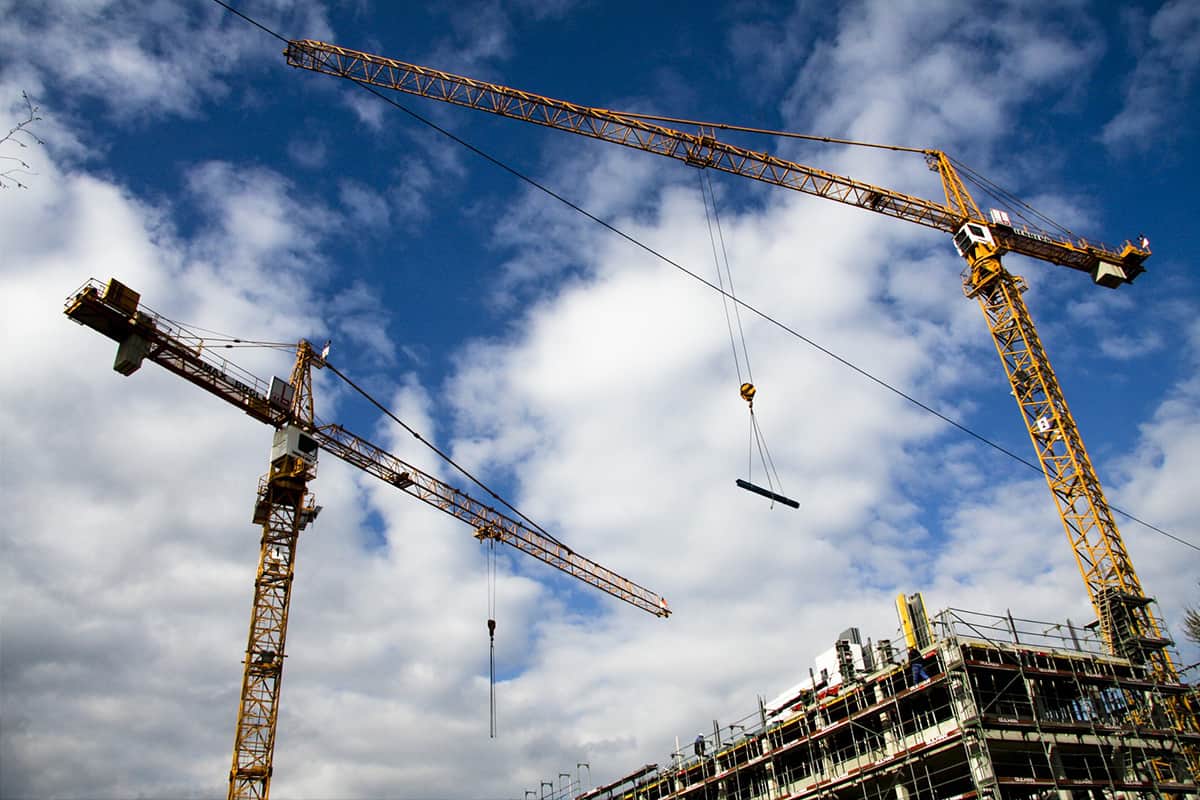

Building & Construction
What Is The Difference Between Commercial And Residential Construction?
Modified: January 9, 2024
Learn about the key distinctions between commercial and residential construction. Discover how building-construction varies in scale, purpose, and design, guiding your next project effectively.
(Many of the links in this article redirect to a specific reviewed product. Your purchase of these products through affiliate links helps to generate commission for Storables.com, at no extra cost. Learn more)
Introduction
When it comes to the world of construction, there are two primary categories: commercial construction and residential construction. While both involve the process of building structures, there are significant differences between the two. Understanding these distinctions is crucial for contractors, architects, investors, and homeowners, as it determines the approach, regulations, and considerations involved in each project.
Commercial construction refers to the construction of buildings intended for commercial purposes, such as offices, retail stores, hotels, restaurants, and industrial facilities. On the other hand, residential construction involves building homes, apartments, condominiums, and any other spaces designed for residential occupancy.
In this article, we will explore the differences between commercial and residential construction, examining their purposes, design and architectural variances, materials, permits and regulations, timelines, costs, and project management approaches. By the end, you will have a comprehensive understanding of what sets these two types of construction apart.
Key Takeaways:
- Commercial construction prioritizes functionality, branding, and safety to create efficient spaces for businesses. It involves complex project management, compliance with regulations, and coordination among various stakeholders to support commercial activities.
- Residential construction focuses on personalized living spaces, budget management, and compliance with zoning regulations. It involves managing design expectations, quality construction, and effective communication with homeowners to create comfortable and functional homes.
Read more: What Is The Difference Between Residential, Commercial, And Industrial Air Conditioning Applications
Definition of Commercial Construction
Commercial construction is the process of erecting structures specifically intended for commercial use. This includes buildings such as office spaces, retail stores, hotels, restaurants, warehouses, and industrial facilities. The primary goal of commercial construction is to create functional and efficient spaces that cater to the needs of businesses and organizations.
Commercial construction projects typically involve larger-scale developments and often require the expertise of various professionals, including architects, engineers, contractors, and subcontractors. These projects are commonly funded by private investors, corporations, or government entities.
One of the key characteristics of commercial construction is the emphasis on meeting building codes, safety regulations, and accessibility requirements. Commercial buildings must comply with specific standards to ensure the well-being and safety of occupants. Furthermore, commercial construction projects often need to obtain permits and undergo inspections to ensure compliance with local zoning regulations.
Another aspect that sets commercial construction apart is the attention to the layout and design of the space. These buildings are typically designed with efficiency and functionality in mind, considering factors such as traffic flow, accessibility, and the specific needs of the businesses that will occupy the space.
Commercial construction also requires a focus on durability and longevity. Buildings in this category are designed to withstand heavy use, constant foot traffic, and the wear and tear associated with their intended commercial activities. This necessitates the use of high-quality materials and construction techniques that prioritize longevity and minimize maintenance requirements.
Definition of Residential Construction
Residential construction refers to the process of building structures that are intended for residential purposes. This category includes single-family homes, apartments, townhouses, condominiums, and other dwellings designed for private occupancy.
The primary objective of residential construction is to create comfortable and livable spaces for individuals and families. Unlike commercial construction, which focuses on catering to businesses and organizations, residential construction prioritizes the needs and preferences of homeowners and residents.
Residential construction projects can vary in scale, ranging from small-scale renovations or additions to large-scale developments. These projects usually involve collaboration between architects, contractors, and subcontractors to ensure the successful completion of the construction process.
One of the key aspects of residential construction is the consideration of aesthetics and personalization. Homeowners often have a vision of their ideal living space, and residential construction aims to bring that vision to life. This can involve customization in terms of layout, architectural style, finishes, and overall design to suit the preferences of the homeowner.
Unlike commercial construction, which must adhere to stringent building codes and safety regulations, residential construction must also meet specific housing standards. These standards address aspects such as room size, egress requirements, electrical and plumbing systems, and accessibility, ensuring that the house is safe and suitable for habitation.
In residential construction, emphasis is also placed on creating a sense of comfort, functionality, and privacy. Rooms are designed to accommodate the needs of the homeowners, with considerations given to factors such as bedroom space, living areas, kitchens, bathrooms, and outdoor spaces like gardens or patios.
It is important to note that residential construction projects often involve homeowners obtaining financing, such as mortgages or personal loans, to fund the construction or purchase of the residential property. This adds an additional layer of complexity compared to commercial construction, where funding is typically provided by external investors or companies.
Purpose of Commercial Construction
The primary purpose of commercial construction is to create buildings and spaces that facilitate various commercial activities. These structures are designed to serve the needs of businesses and organizations, providing functional and efficient spaces for their operations.
One of the main objectives of commercial construction is to establish a professional and inviting setting where companies can conduct their day-to-day activities. This can involve the construction of office buildings, retail stores, and hotels that offer a pleasant and conducive environment for employees, customers, and clients.
Commercial construction also focuses on optimizing the use of space for commercial purposes. Whether it’s designing an open-plan office layout to encourage collaboration or creating a retail store with strategically placed displays and aisles for better customer flow, the goal is to maximize the efficiency and profitability of the commercial venture.
Furthermore, another purpose of commercial construction is to create buildings that reflect the branding and identity of the businesses they house. This includes incorporating architectural elements, signage, and interior design that align with the company’s image and values. The building becomes a physical representation of the brand and plays a role in attracting customers and creating a positive impression.
In addition to providing functional spaces, commercial construction also aims to meet safety and accessibility requirements. Building codes and regulations play a crucial role in ensuring that commercial buildings are safe for occupants and comply with fire safety, structural integrity, and disability accessibility standards. These regulations help mitigate potential risks and protect the well-being of employees and customers.
Ultimately, the purpose of commercial construction is to create an environment conducive to conducting business and supporting economic growth. These buildings become the foundation for various industries and sectors, fostering economic activity, generating employment opportunities, and contributing to the overall development of a region.
Purpose of Residential Construction
Residential construction serves the purpose of creating homes and living spaces for individuals and families. The primary objective is to provide functional, comfortable, and safe environments where people can live, relax, and raise their families.
One of the main purposes of residential construction is to fulfill the basic need for shelter and housing. It involves the construction of single-family homes, apartments, condominiums, and other residential structures that serve as private and personal living spaces. Residential construction aims to meet the specific needs and preferences of homeowners, providing them with a place to call their own.
Residential construction also seeks to create a sense of community and belonging. Neighborhoods and housing developments are often designed in a way that encourages social interactions and a sense of connection among residents. This can include the construction of common areas, parks, playgrounds, or community centers within residential complexes.
Privacy and comfort are crucial considerations in residential construction. Homes are designed to provide personal spaces where individuals and families can retreat, relax, and enjoy privacy. The layout and design of residential structures emphasize creating functional spaces for bedrooms, living areas, kitchens, and bathrooms that cater to the needs and lifestyle of the occupants.
Moreover, residential construction serves the purpose of personalization and self-expression. Homeowners have the freedom to customize their living spaces according to their individual taste and preferences. From selecting architectural styles to choosing finishes, colors, and interior design elements, residential construction allows homeowners to create a space that reflects their personality and lifestyle.
In addition, residential construction contributes to the growth and development of communities. The construction and sale of residential properties generate employment opportunities for construction workers, contractors, and subcontractors. It also boosts the local economy through the purchase of building materials, home furnishings, and other related products and services.
Lastly, residential construction is an investment in the future. Homeownership provides individuals and families with a sense of stability, financial security, and the potential for long-term wealth accumulation. By owning a home, individuals have the opportunity to build equity and create a lasting legacy for themselves and future generations.
Design and Architectural Differences
Commercial construction and residential construction differ significantly in terms of design and architectural considerations. These differences arise from the distinct purposes and functional requirements of each type of construction.
Commercial construction often involves large-scale developments that prioritize functionality and efficiency. The design of commercial buildings focuses on maximizing space utilization, traffic flow, and creating an environment conducive to the specific commercial activities that will take place within the structure.
Architecturally, commercial buildings often exhibit a more modern and sleek aesthetic. Clean lines, glass facades, and open floor plans are common features in commercial architecture. The design of the buildings aims to capture attention, create a professional image, and contribute to the branding and identity of the businesses they house.
Interior design in commercial construction follows a similar principle of efficiency. Spaces are designed with the goal of optimizing productivity and creating an inviting atmosphere for employees and customers. This can include features such as collaborative work areas, meeting rooms, break rooms, and customer service areas tailored to the needs of the business.
Residential construction, on the other hand, focuses more on creating a comfortable and personalized living environment for homeowners. Architectural design in residential construction encompasses a wide range of styles and aesthetics, catering to individual preferences and the surrounding neighborhood.
Residential buildings often prioritize privacy and individuality. The design may include features such as separate bedrooms, private outdoor spaces, and personalized interior layouts to create spaces that reflect the homeowner’s lifestyle and preferences. Residential architecture can range from traditional and classical styles to modern and contemporary designs.
Interior design in residential construction places emphasis on creating spaces for relaxation, family activities, and personal expression. Kitchens, living rooms, and bathrooms are designed with comfort and functionality in mind, often incorporating elements such as cozy seating areas, ample storage options, and natural lighting.
Another notable architectural difference lies in the scale of the buildings. Commercial construction projects tend to involve larger structures and often incorporate multiple floors to accommodate a greater number of employees or businesses. Residential construction, on the other hand, focuses on building single-family homes or smaller multi-family residential buildings.
In summary, commercial construction prioritizes functionality, efficiency, and branding, while residential construction focuses on creating personalized, comfortable, and private living spaces. These divergent design and architectural considerations reflect the unique purposes and needs of each type of construction.
Materials and Techniques Used in Commercial Construction
Commercial construction projects require specific materials and construction techniques to meet the demands of larger-scale developments and commercial activities. These materials and techniques are chosen for their durability, efficiency, and ability to meet the unique requirements of the project.
One common material used in commercial construction is steel. Steel is known for its strength and versatility, making it suitable for constructing large-scale structures such as office buildings, warehouses, and industrial facilities. Steel frames provide stability and structural integrity, allowing for open interior spaces and flexibility in design.
Concrete is another essential material in commercial construction. Reinforced concrete is often used for constructing foundations, walls, and slabs. The durability and fire-resistant properties of concrete make it ideal for commercial buildings that require robust structural support and protection.
Glass is extensively used in commercial construction for its aesthetic appeal and functionality. Large windows, glass facades, and curtain walls are common features in commercial buildings, allowing natural light to penetrate the interior and providing a visually inviting atmosphere.
Additionally, commercial construction often involves the use of specific materials for insulation, acoustics, and fire protection. These materials include insulation boards, soundproofing materials, and fire-resistant coatings to ensure the safety and comfort of occupants.
Techniques such as pre-fabrication and modular construction are commonly employed in commercial projects to enhance efficiency and reduce construction time. Pre-fabricated components, such as precast concrete panels or steel frames, are manufactured off-site and then assembled on-site. This approach allows for faster construction, minimizing disruptions and reducing overall project timelines.
Commercial construction also incorporates advanced building systems and technologies. This includes electrical, HVAC (heating, ventilation, and air conditioning), and plumbing systems designed to accommodate the specific needs of the commercial space. Smart building features, energy-efficient lighting, and automation systems may also be integrated to optimize energy usage and enhance occupant comfort.
In summary, commercial construction utilizes materials such as steel, concrete, and glass for their strength, durability, and aesthetic appeal. Additionally, techniques like pre-fabrication and advanced building systems are employed to improve efficiency and meet the demands of larger-scale commercial projects.
Materials and Techniques Used in Residential Construction
Residential construction utilizes a wide range of materials and techniques to create comfortable, durable, and visually appealing homes for individuals and families. These materials and techniques are chosen to meet the specific needs and preferences of homeowners, ensuring the construction of safe and functional living spaces.
One commonly used material in residential construction is wood. Wood offers versatility in design, warmth, and a natural aesthetic appeal. It is commonly used for framing, flooring, roofing, and interior finishes in residential buildings. Different types of wood, such as lumber or engineered wood products, are utilized depending on the specific application and desired aesthetics.
Concrete is another essential material in residential construction. It is used primarily for the foundation of the home, providing stability and strength to support the structure. Concrete is also used in the construction of basements, retaining walls, and driveways, offering durability and resistance to weather conditions.
Brick and stone are popular materials for exterior cladding in residential construction. These materials provide a classic and timeless appearance while offering durability and protection against the elements. Brick and stone can be used for the entire exterior or as decorative accents, creating a visually appealing façade.
Roofing materials for residential construction vary depending on the climate and desired aesthetics. Common roofing options include asphalt shingles, metal roofing, clay or concrete tiles, and slate. These materials provide protection from the elements and contribute to the overall design of the home.
Techniques such as timber frame construction or light gauge steel framing are used in residential construction for framing the structure. Timber frame construction utilizes wooden beams and posts to create a sturdy framework, while light gauge steel framing offers durability and versatility in design.
Insulation materials play a crucial role in residential construction to ensure energy efficiency and comfort within the home. Common insulation materials include fiberglass batts, foam boards, and spray foam. These materials help to regulate temperature, reduce energy consumption, and maintain a comfortable indoor environment.
Other techniques used in residential construction include drywall installation, interior finishes such as paint and wallpaper, and flooring options such as hardwood, laminate, tile, or carpet. Plumbing and electrical systems are also critical components of residential construction to provide water supply and electrical power throughout the home.
As technology advances, sustainable and eco-friendly construction practices are becoming more prevalent in residential construction. This includes the use of energy-efficient appliances, solar panels, and the incorporation of green building materials such as recycled or natural materials.
In summary, residential construction utilizes a combination of materials such as wood, concrete, brick, and stone to create comfortable and visually appealing homes. Various techniques, including framing methods and insulation installation, are employed to ensure durability, energy efficiency, and the realization of homeowners’ design preferences.
When considering the difference between commercial and residential construction, it’s important to note that commercial projects typically involve larger scale and more complex designs, while residential projects are focused on individual homes and smaller structures. Keep this in mind when planning and budgeting for your construction project.
Permit and Regulatory Differences
Commercial construction and residential construction differ significantly in terms of permits and regulatory requirements. The variations in these areas are due to the different purposes, scale, and potential impact on the surrounding community associated with each type of construction.
In commercial construction, obtaining permits and complying with regulations is typically a more complex and rigorous process compared to residential construction. Commercial projects often involve larger-scale developments, increased occupancy loads, and more intricate building systems, requiring thorough scrutiny by regulatory authorities.
Commercial construction projects are subject to extensive zoning regulations, building codes, and safety standards. These regulations ensure that the commercial building is constructed and operated in a manner that is safe for both occupants and the surrounding community. Complying with these regulations requires thorough planning, coordination, and documentation throughout the entire construction process.
Commercial construction permits often involve a comprehensive review process that may include multiple government agencies. Depending on the jurisdiction, the approval process for commercial construction permits may require architectural and engineering drawings, environmental impact assessments, traffic studies, and documentation of compliance with accessibility requirements.
Further, commercial construction projects usually involve a more extensive review of fire prevention and life safety systems. This may include comprehensive fire suppression systems, emergency exits, fire-resistant building materials, and adherence to strict standards for fire protection and evacuation procedures.
On the other hand, while residential construction still requires permits and compliance with building codes, the process tends to be relatively more straightforward compared to commercial construction. Residential construction projects generally have fewer occupancy loads and less complexity in building systems, leading to a less intensive regulatory review process.
Residential construction permits usually focus on ensuring compliance with building codes and zoning regulations specific to residential properties. This may involve ensuring proper setbacks, adherence to height limitations, structural stability, and compliance with energy efficiency requirements.
In some cases, residential construction permits may also include reviews of architectural plans to determine if the design meets aesthetic standards or maintains the character of the neighborhood. However, these requirements are typically less stringent compared to commercial construction.
It’s important to note that building codes and permit requirements can vary by location, so it’s essential for developers, contractors, and homeowners to be acquainted with the specific regulations in their area before undertaking any construction project.
In summary, commercial construction involves a more rigorous and complex permitting and regulatory process due to the larger scale, increased occupancy loads, and potential impact on the surrounding community. Residential construction, while still requiring permits and compliance with building codes, generally has a more simplified review process due to the smaller scale and less complex building systems involved.
Timeline and Duration Differences
The timeline and duration of construction projects can vary significantly between commercial construction and residential construction. These differences are influenced by factors such as project complexity, scale, and the number of stakeholders involved.
In commercial construction, projects tend to have longer timelines and durations compared to residential construction. Commercial projects often involve larger-scale developments, such as office buildings or retail complexes, which require more time for planning, permitting, and construction.
Commercial construction projects typically involve numerous stakeholders, including architects, engineers, contractors, subcontractors, and regulatory agencies. Coordinating and managing the efforts of various professionals can contribute to a longer timeline. Additionally, the design and planning phase of commercial projects often require extensive review and approval processes, further adding to the overall duration.
Furthermore, the scale and complexity of commercial projects, including intricate building systems and specialized requirements, can extend the construction timeline. The construction of commercial buildings may require significant site preparation, foundations, and structural work, all of which take time to complete.
Additionally, commercial construction projects often incorporate advanced technologies, such as complex HVAC (heating, ventilation, and air conditioning) systems, fire suppression systems, or specialized equipment. The installation and integration of these systems require additional time and coordination, further elongating the construction duration.
On the other hand, residential construction projects generally have shorter timelines and durations compared to commercial construction. Residential projects, such as single-family homes or small-scale renovations, are typically simpler in design and involve fewer stakeholders.
Residential construction projects often have a more streamlined process, with fewer regulatory approvals required compared to commercial projects. This results in shorter permitting durations, helping to expedite the start of construction.
Residential construction projects also tend to have fewer complexities in terms of design and building systems. While customizations and personalized finishes may still be involved, residential projects generally do not require the same level of customization and installation of specialized systems as commercial buildings.
Moreover, residential construction benefits from standardized building practices and familiarity with common construction techniques, making the construction process more efficient. Contractors and tradespeople often have experience working on residential projects, allowing for smoother coordination and faster completion.
Overall, the timeline and duration differences between commercial and residential construction are primarily a result of the project scale, complexity, stakeholder involvement, and regulatory requirements. Commercial construction projects tend to have longer timelines due to their larger scale, intricate designs, and coordination requirements, while residential construction projects generally have shorter timelines due to their simpler nature and standardized building practices.
Cost Differences
Cost is a significant factor that distinguishes commercial construction from residential construction. The differences in costs arise from various factors, including the project scale, complexity, materials used, and the level of customization involved.
Commercial construction projects typically require a larger budget compared to residential construction. Commercial buildings, such as office complexes or retail spaces, are often larger in scale, have more complex designs, and require specialized building systems. These factors contribute to higher material and labor costs.
Commercial construction projects involve higher labor costs due to the need for skilled workers, specialized trades, and coordination among multiple contractors and subcontractors. The complexity of commercial projects, along with the need for adherence to safety regulations and specialized certifications, often results in higher labor expenses.
In terms of materials, commercial construction often entails the use of specialized, durable, and high-quality materials. This can include steel for structural support, reinforced concrete for foundations, and glass for facades. These materials are typically more expensive compared to those commonly used in residential construction, such as wood framing or vinyl siding.
Moreover, commercial buildings frequently require the installation of sophisticated building systems, such as HVAC, electrical, and fire suppression systems, which can significantly add to the overall project cost. These systems are essential for creating a comfortable and functional workspace that meets regulatory requirements but can be costly to design, install, and maintain.
On the other hand, residential construction projects generally have lower overall costs compared to commercial projects. Residential buildings, such as single-family homes or small multi-unit properties, are typically smaller in scale and have simpler designs. The materials and building systems used in residential construction are often more cost-effective compared to those used in commercial projects.
Residential construction often involves standard building practices and materials that are readily available and less expensive. Wood framing, asphalt shingles, and vinyl siding are common examples of materials used in residential construction that are typically more affordable compared to their counterparts used in commercial projects.
Furthermore, residential construction tends to have fewer specialized building systems compared to commercial construction. While residential properties require plumbing, electrical, and HVAC systems, they generally have simpler configurations and lower installation and maintenance costs compared to the complex systems in commercial buildings.
However, it is important to note that the costs of construction can still vary significantly depending on factors such as location, design choices, finishes, and level of customization. Custom-designed residential homes with high-end finishes and luxury features can have significantly higher costs compared to standard residential construction.
In summary, commercial construction projects typically have higher costs compared to residential construction due to the larger scale, complexity, specialized materials, and building systems involved. Residential construction projects generally have lower costs due to their smaller scale, simpler designs, and more cost-effective materials and building systems.
Project Management and Stakeholders in Commercial Construction
Commercial construction projects require efficient project management and collaboration among various stakeholders to ensure successful and timely completion. The involvement of multiple parties and the complexity of commercial projects necessitate a robust project management approach.
In commercial construction, the project management team typically includes a project manager, architect, engineer, and construction manager. This team is responsible for coordinating and overseeing the entire construction process, from the initial planning and design stages to the final completion of the project.
The project manager plays a crucial role in commercial construction. They are responsible for overall project coordination, budget management, scheduling, and ensuring that all stakeholders are working together towards a common goal. The project manager communicates and negotiates with clients, architects, contractors, and subcontractors to address any issues or changes that arise during the construction process.
Architects and engineers play a vital role in commercial construction as well. They work closely with the project manager to develop and finalize the design plans, ensuring that they meet the needs and goals of the client while adhering to building codes and regulations. Architects and engineers also collaborate with contractors and subcontractors to ensure the design is implemented correctly during the construction phase.
Contractors and subcontractors are major stakeholders in commercial construction. Contractors oversee the day-to-day construction work on site, manage the workforce, and ensure that the project progresses according to the schedule and specifications. Subcontractors, specialized professionals in specific trades such as electrical or plumbing, are hired by the contractor to perform specific tasks within the project. Coordinating and managing the work of contractors and subcontractors is a critical aspect of commercial construction project management.
Other stakeholders in commercial construction may include investors, building owners, and regulatory or permitting agencies. Investors provide the financial backing for the project and may have input in major decisions. Building owners may be involved in the design and functionality of the commercial space and may work closely with the project management team to ensure the building meets their specific requirements.
Regulatory and permitting agencies also play a significant role in commercial construction. They review and approve plans and enforce compliance with building codes and regulations. The project management team must engage with these agencies, submitting plans, responding to reviews, and ensuring all necessary permits are obtained before construction can begin.
Clear and effective communication is vital in commercial construction. The project management team facilitates regular meetings and communication channels among stakeholders to ensure that everyone is aligned and any issues or challenges are addressed promptly. Successful commercial construction projects require collaboration, coordination, and effective management of all stakeholders involved.
Project Management and Stakeholders in Residential Construction
Residential construction projects involve a different set of project management dynamics and stakeholders compared to commercial construction. While the scale and complexity of residential projects are typically smaller, efficient project management is still crucial to ensure successful completion.
In residential construction, the project management team is often led by a general contractor or a construction manager. The general contractor oversees the day-to-day operations, manages subcontractors, and ensures that the project progresses according to schedule and budget. They act as a central point of contact for the homeowner, architects, and subcontractors throughout the construction process.
The homeowner plays a critical role as a stakeholder in residential construction projects. They engage with the project management team to communicate their vision, preferences, and expectations for the final outcome of the project. Homeowners are involved in decision-making processes related to design options, finishes, and any customizations they desire for their home.
Architects and designers are essential stakeholders in residential construction. They work closely with the homeowner to create the design plans, taking into account the homeowner’s needs, preferences, and budget. Architects provide architectural drawings and plans, while designers assist with selecting materials, finishes, and interior aesthetics.
Subcontractors and tradespeople are key stakeholders in residential construction. They specialize in various areas, such as plumbing, electrical work, roofing, or flooring installation. The general contractor manages and coordinates the work of these subcontractors to ensure that the construction progresses smoothly and meets the homeowner’s expectations.
Suppliers of building materials play an important role in residential construction. They provide a range of materials, such as lumber, flooring, windows, and fixtures. The project management team works closely with suppliers to source and deliver the necessary materials on time to keep the construction process on schedule.
Building inspectors are also involved in residential construction projects. They review the construction at various stages to ensure compliance with local building codes and regulations. Inspections are conducted to verify that the construction meets safety standards and is built to code, ensuring the homeowner’s safety and satisfaction.
Effective communication and collaboration among stakeholders are crucial in residential construction. The project management team facilitates regular meetings and communication channels to keep all parties informed about the progress, address any concerns or changes, and ensure that the homeowner’s expectations are met.
In summary, residential construction projects involve a project management team led by a general contractor, with the homeowner, architects, subcontractors, and suppliers as key stakeholders. Effective communication, coordination, and collaboration are essential to ensure the successful completion of the project and meet the homeowner’s needs and expectations.
Read more: What Is A Commercial Construction Loan
Challenges and Considerations in Commercial Construction
Commercial construction projects present unique challenges and considerations due to the scale, complexity, and specific requirements involved. Addressing these challenges and considerations is crucial for successful project execution and meeting client expectations.
One of the main challenges in commercial construction is managing the coordination and communication among various stakeholders. With numerous professionals involved, such as architects, engineers, contractors, subcontractors, and regulatory agencies, effective collaboration is essential to ensure that the project progresses smoothly and stays on schedule. Clear communication channels and regular project meetings are vital to address any issues, changes, or conflicts that may arise.
Budget management is another significant consideration in commercial construction. Large-scale commercial projects often involve substantial financial investments, and staying within budget can be a challenge. Cost overruns can occur due to unforeseen site conditions, design changes, price fluctuations in building materials, or delays in construction. Close monitoring of project expenses, regular cost evaluations, and proactive risk management can help mitigate financial risks and keep the project on track.
Meeting regulatory requirements is a critical consideration in commercial construction. Commercial buildings must adhere to specific codes, regulations, and safety standards to ensure the well-being of occupants and the surrounding community. Compliance with zoning laws, building codes, fire regulations, and accessibility standards requires careful planning, documentation, and coordination with regulatory agencies. Failing to address these considerations can result in delays, fines, or even legal consequences.
The complexity of commercial projects can pose additional challenges. Large-scale developments often require intricate building systems, such as electrical, plumbing, HVAC, and fire protection. Integrating and coordinating these systems with the overall design and construction process demands expertise and meticulous planning. Effective project management, collaboration among stakeholders, and expertise in specialized building systems are crucial to meet these challenges successfully.
Another consideration in commercial construction is ensuring that the project aligns with sustainability goals and energy efficiency standards. Energy-efficient design and construction practices can help reduce environmental impact and operational costs. Implementation of sustainable building materials, energy-efficient systems, and green technology can be challenging but is increasingly important in the construction industry.
Lastly, managing the timelines and minimizing disruptions can be challenging in commercial construction due to the potential impact on businesses and organizations. Keeping construction activities organized, implementing efficient construction scheduling, and minimizing disruptions to surrounding areas require careful coordination and communication with stakeholders, including nearby businesses, residents, and the general public.
In summary, commercial construction presents challenges related to stakeholder coordination, budget management, regulatory compliance, project complexity, sustainability goals, and minimizing disruptions. Addressing these challenges and considerations through effective project management, clear communication, collaboration, and meticulous planning and execution can contribute to the successful completion of commercial construction projects.
Challenges and Considerations in Residential Construction
Residential construction projects come with their own set of challenges and considerations that need to be addressed to ensure successful and satisfactory outcomes for homeowners. These challenges involve factors ranging from design complexities to budget constraints and zoning regulations.
One significant challenge in residential construction is achieving the desired design while meeting the homeowner’s budget. Homeowners often have specific expectations and preferences, but staying within a predetermined budget can be a challenge. Balancing design choices, materials, and customization options without compromising quality and affordability is crucial. Effective communication and collaboration between homeowners, architects, and contractors can help manage these challenges.
Another consideration in residential construction is managing timelines and coordinating various construction activities. Delays in material procurement, unforeseen site conditions, weather fluctuations, and changes in design can impact the project schedule. It is essential to establish realistic timelines, monitor progress closely, and address any delays promptly to ensure timely completion and minimize disruptions for homeowners.
Compliance with zoning regulations and building codes is a critical consideration in residential construction. Each locality has specific regulations that dictate setbacks, height restrictions, and structural requirements. Ensuring full compliance with these regulations, including obtaining necessary permits and passing inspections, is essential to avoid legal issues and delays in the construction process.
Budget management is a significant consideration in residential construction projects. Homeowners may have specific financial constraints or a predetermined budget that needs to be adhered to throughout the project. Effective cost estimation, regular budget monitoring, and proactive management of expenses can help control costs and create transparency between homeowners and contractors.
Quality assurance is another challenge in residential construction. It is essential to ensure that construction meets industry standards and quality expectations. This involves selecting reputable contractors and subcontractors, utilizing premium materials, and conducting regular inspections to identify and rectify any potential construction defects or issues.
Environmental considerations have become more important in residential construction. Implementing sustainable practices and using eco-friendly materials can reduce a project’s environmental impact. However, balancing sustainability goals with budget constraints and availability of green alternatives can be challenging and requires careful planning and decision-making.
Lastly, effective communication and coordination with homeowners throughout the construction process are crucial. Regular updates, transparent progress reporting, and prompt responsiveness to homeowner concerns and feedback foster a positive construction experience. Ensuring that homeowners are involved and informed helps manage expectations and builds trust between the homeowners and the project team.
In summary, challenges and considerations in residential construction range from managing design expectations within set budgets to complying with zoning regulations, ensuring quality construction, managing timelines, and incorporating sustainability practices. Addressing these challenges through effective project management, clear communication, collaboration with stakeholders, and adherence to industry standards enhances the overall success of residential construction projects.
Conclusion
Commercial construction and residential construction are two distinct categories that require different approaches, techniques, and considerations. While they share similarities in terms of construction principles, they have unique purposes, design considerations, materials, stakeholders, and challenges.
Commercial construction focuses on creating functional and efficient spaces for businesses and organizations. The design and architectural elements of commercial buildings prioritize functionality, branding, and the needs of occupants. Materials and techniques used in commercial construction are often geared towards durability, safety, and accommodating specialized building systems. The project management process involves coordination among various stakeholders, ensuring compliance with regulations, and creating an environment that supports commercial activities.
Residential construction, on the other hand, aims to provide comfortable and personalized living spaces for individuals and families. Design considerations in residential construction prioritize privacy, comfort, and the specific preferences of homeowners. Materials used in residential construction are often more cost-effective and tailored to individual aesthetics. The project management process involves collaboration with homeowners, architects, and subcontractors, creating spaces that reflect the homeowners’ vision while adhering to building standards and budget constraints.
Both commercial and residential construction present their own set of challenges and considerations. Commercial construction requires careful stakeholder coordination, budget management, compliance with regulations, and managing complex building systems. Residential construction involves managing design expectations within budget constraints, adhering to zoning regulations, ensuring quality construction, and meeting timelines while accommodating homeowner preferences.
In conclusion, understanding the differences between commercial and residential construction is crucial for professionals and homeowners involved in construction projects. By recognizing the distinct purposes, design considerations, materials, stakeholders, and challenges associated with each type of construction, stakeholders can navigate the construction process more effectively and achieve successful outcomes.
Regardless of whether it is commercial or residential construction, careful planning, effective project management, clear communication, and collaboration among stakeholders lay the foundation for successful construction projects that meet the needs and expectations of all parties involved.
Frequently Asked Questions about What Is The Difference Between Commercial And Residential Construction?
Was this page helpful?
At Storables.com, we guarantee accurate and reliable information. Our content, validated by Expert Board Contributors, is crafted following stringent Editorial Policies. We're committed to providing you with well-researched, expert-backed insights for all your informational needs.





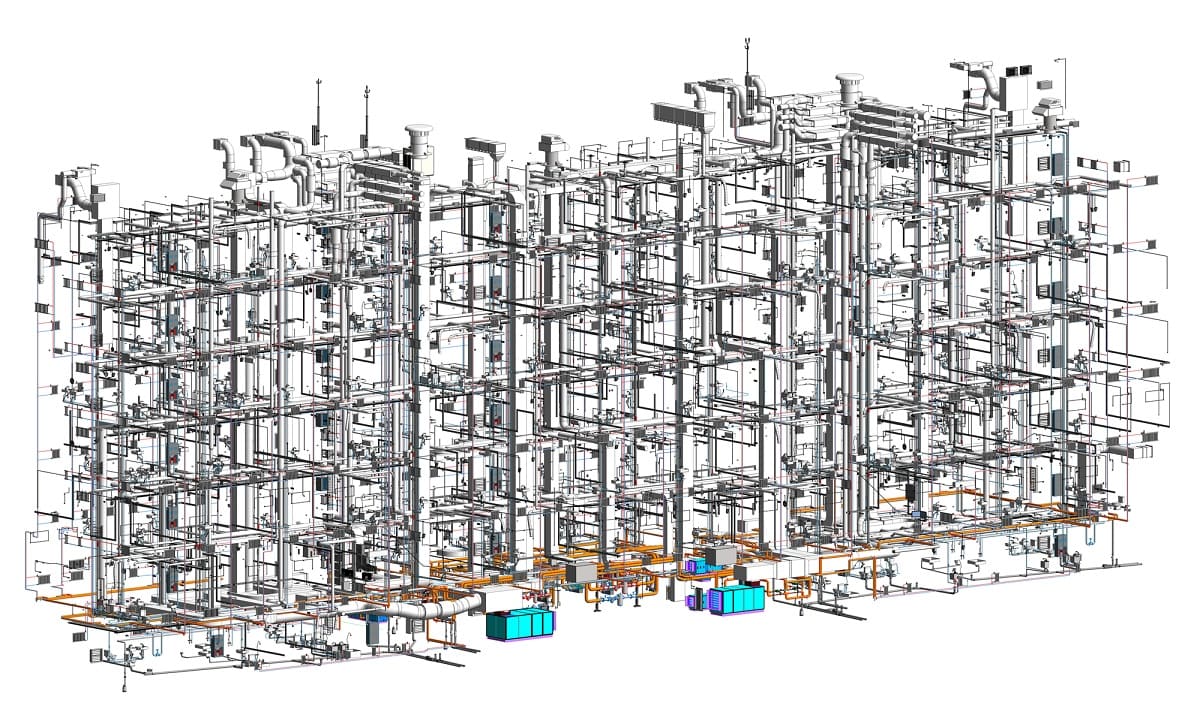
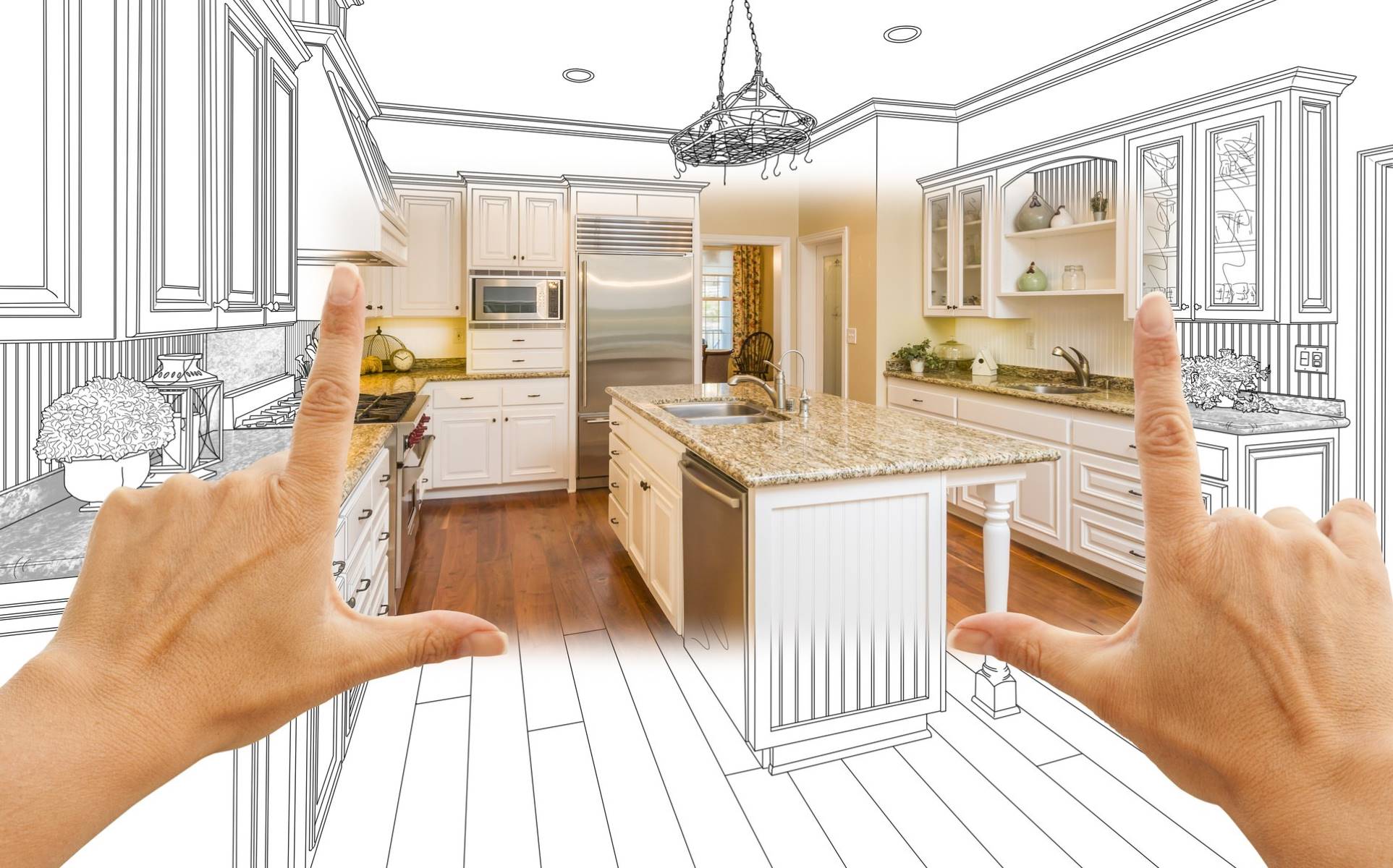


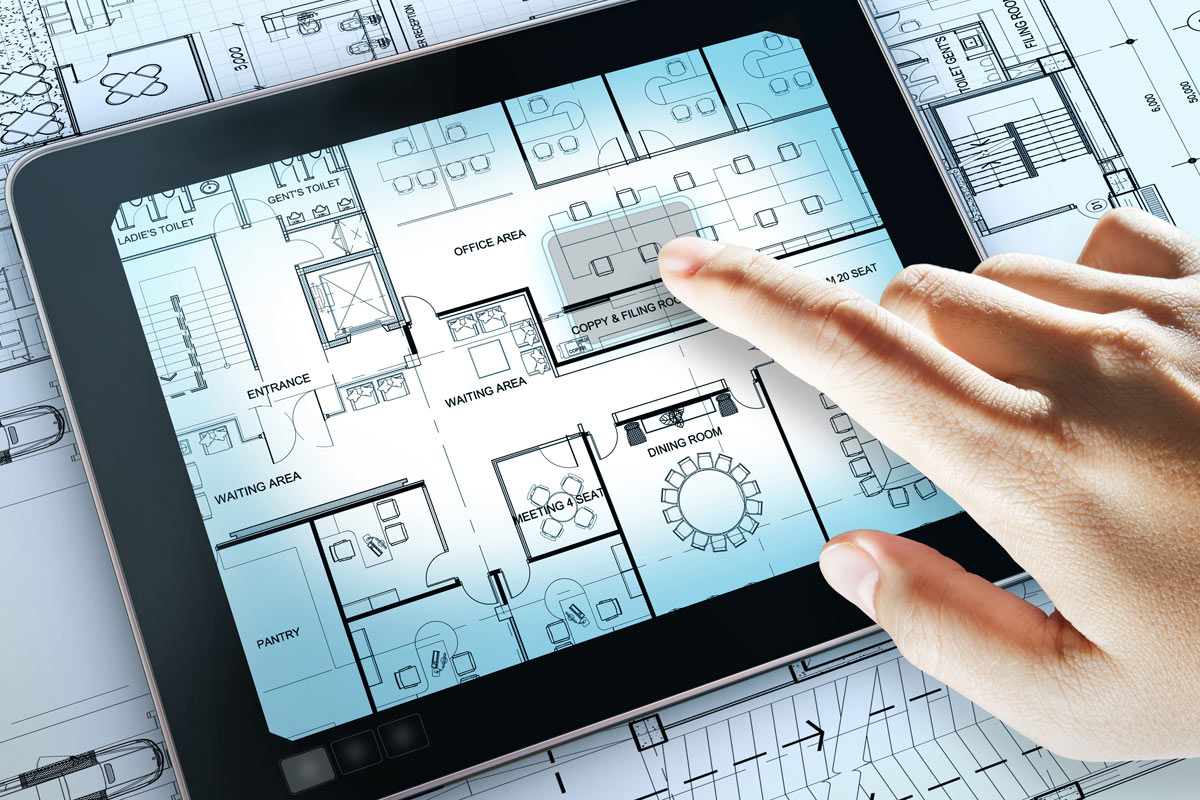
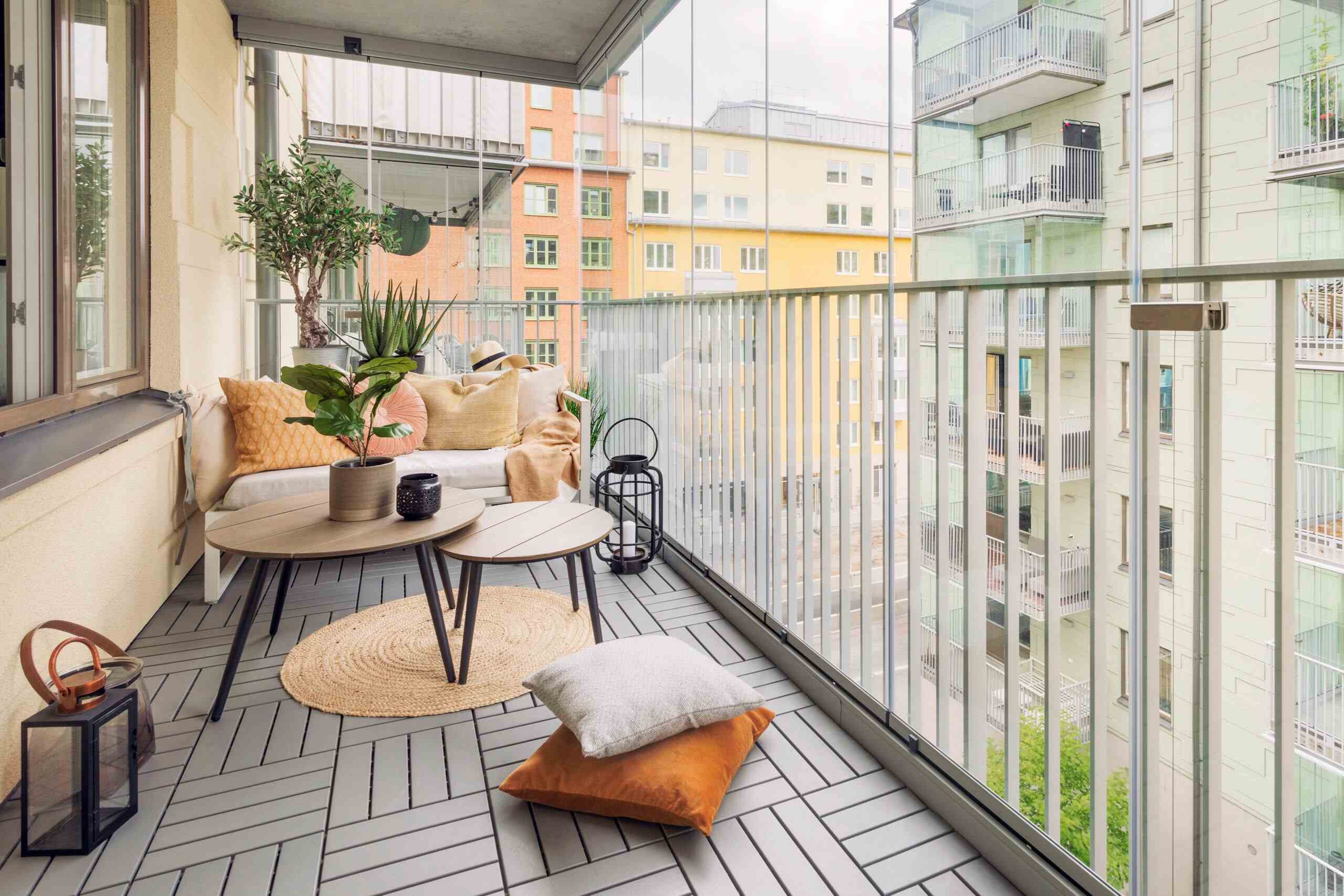


0 thoughts on “What Is The Difference Between Commercial And Residential Construction?”